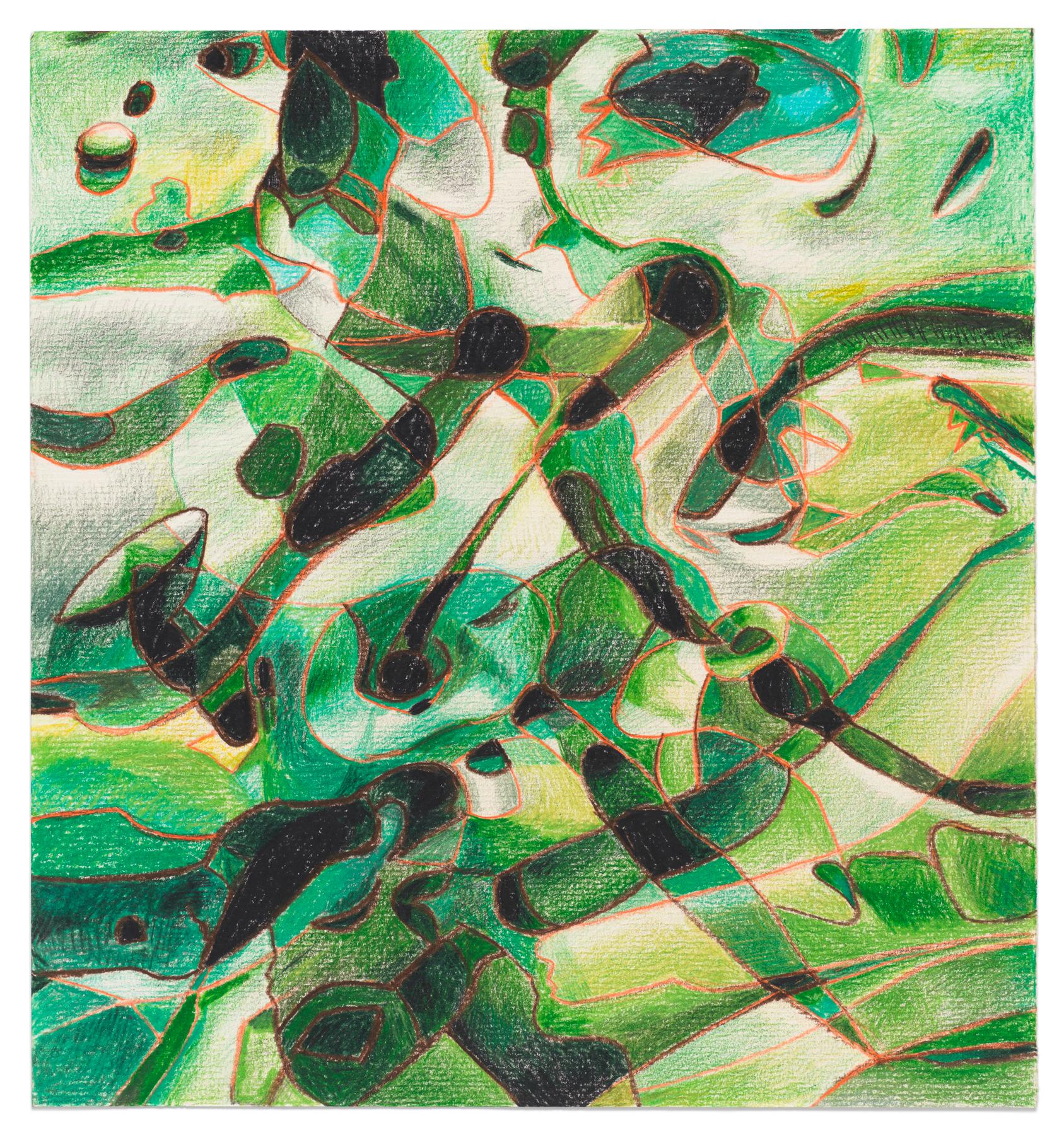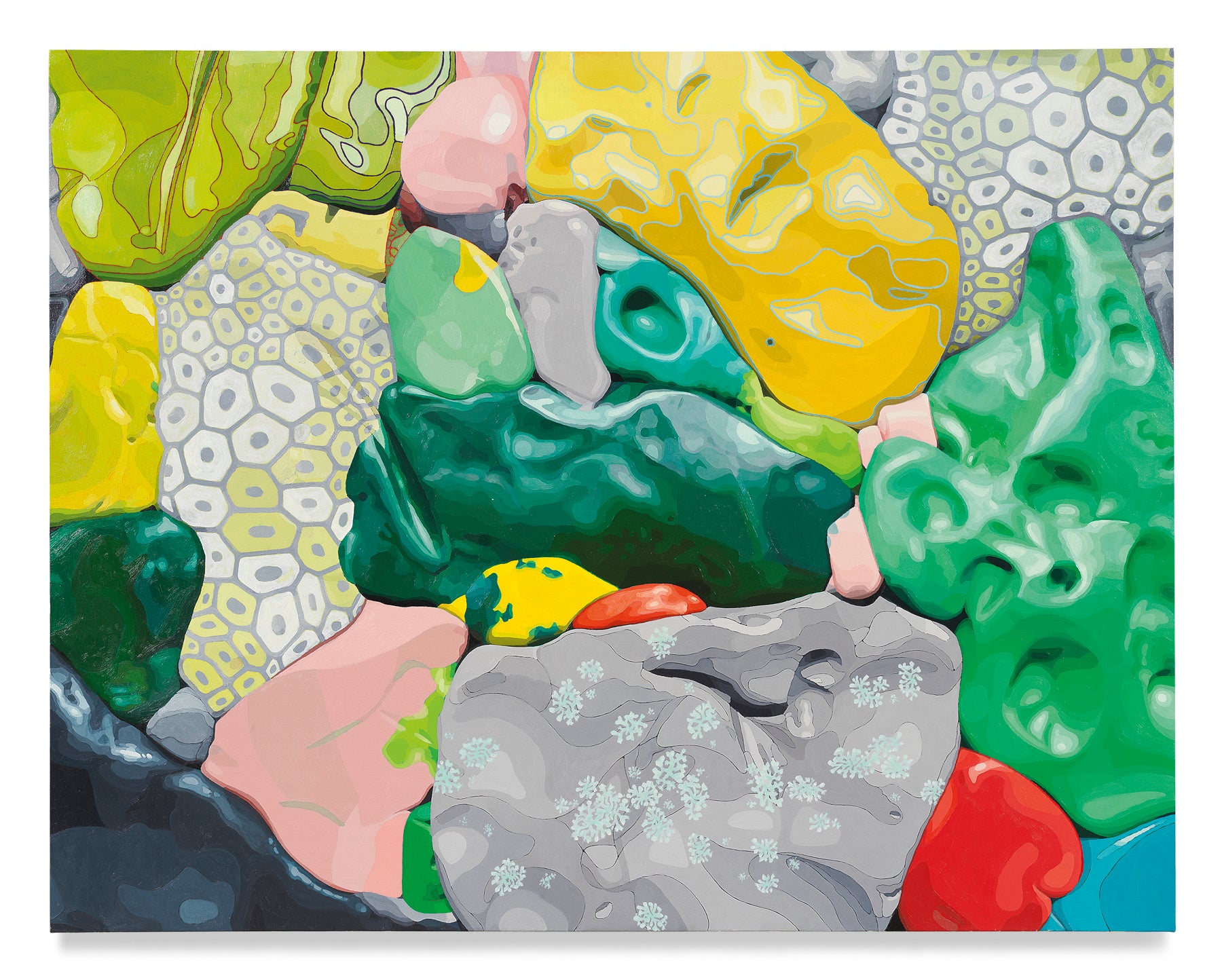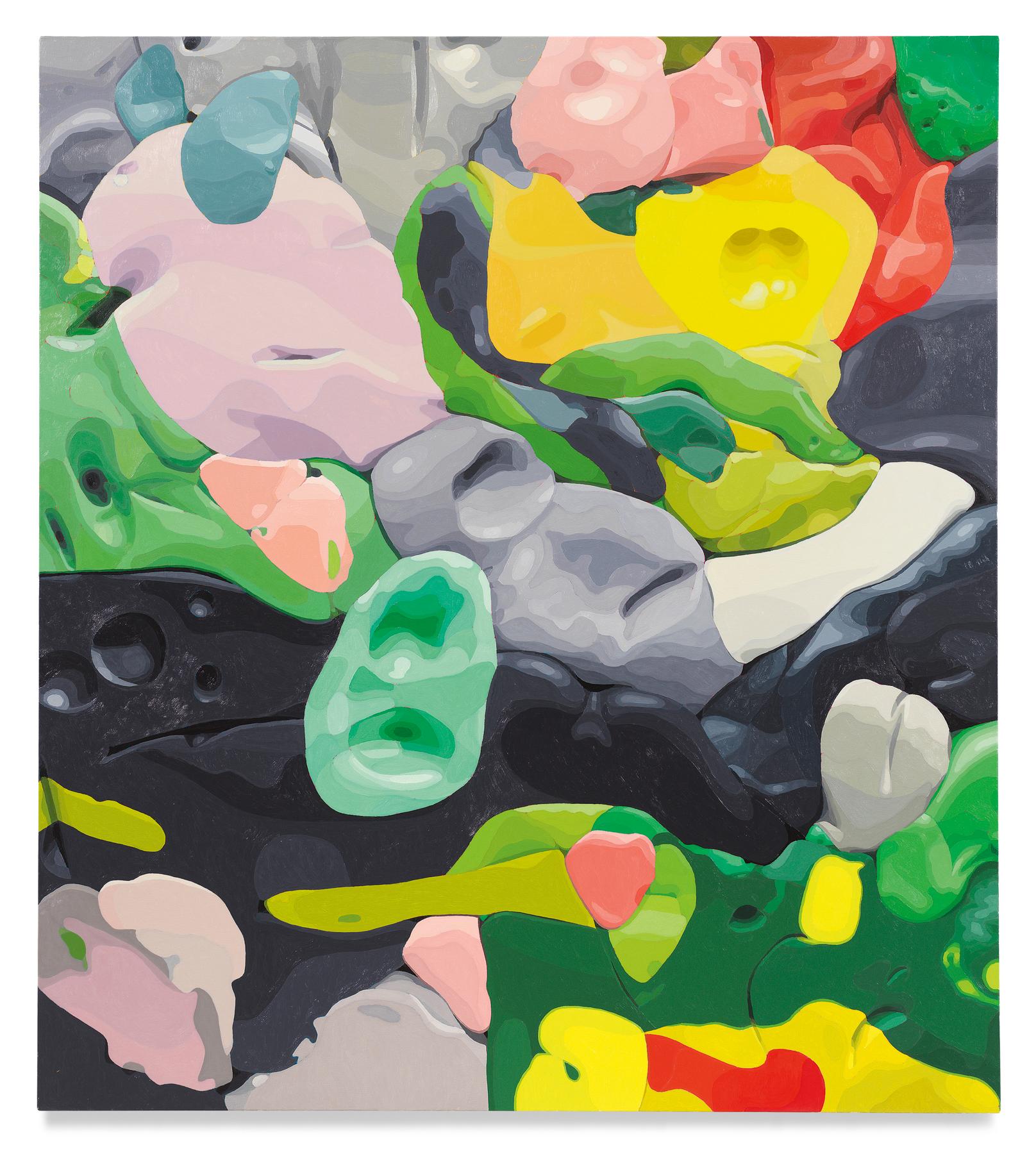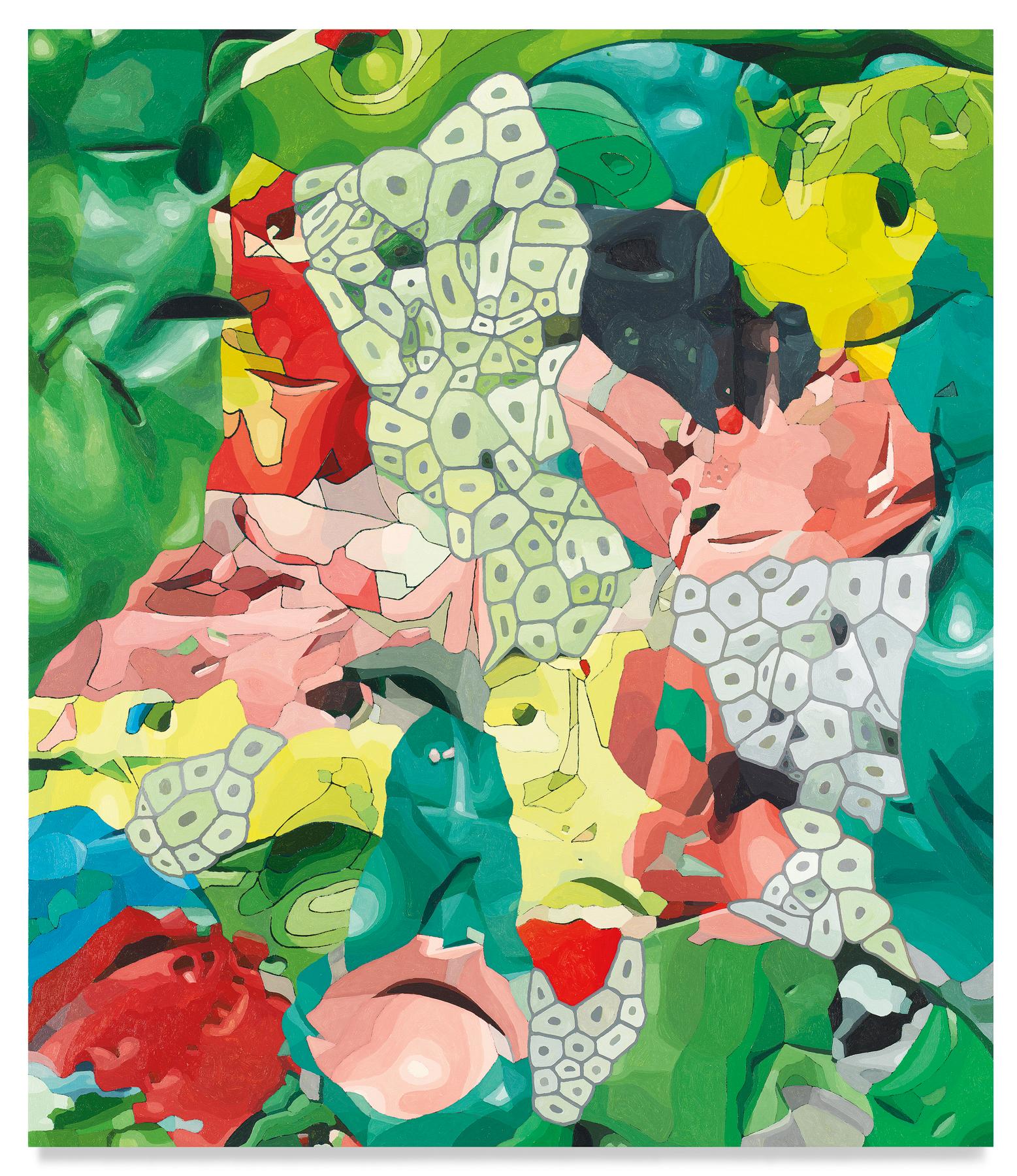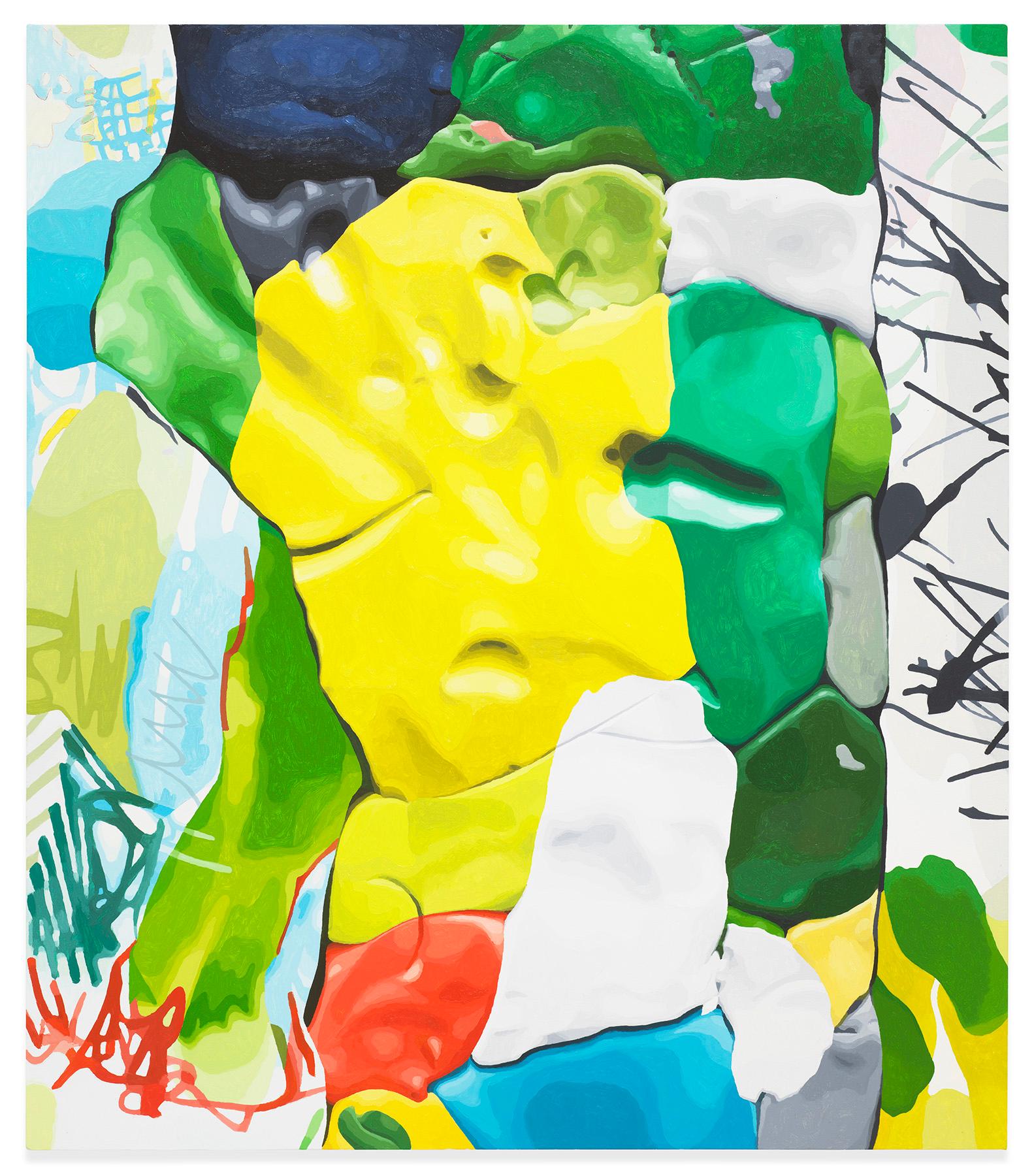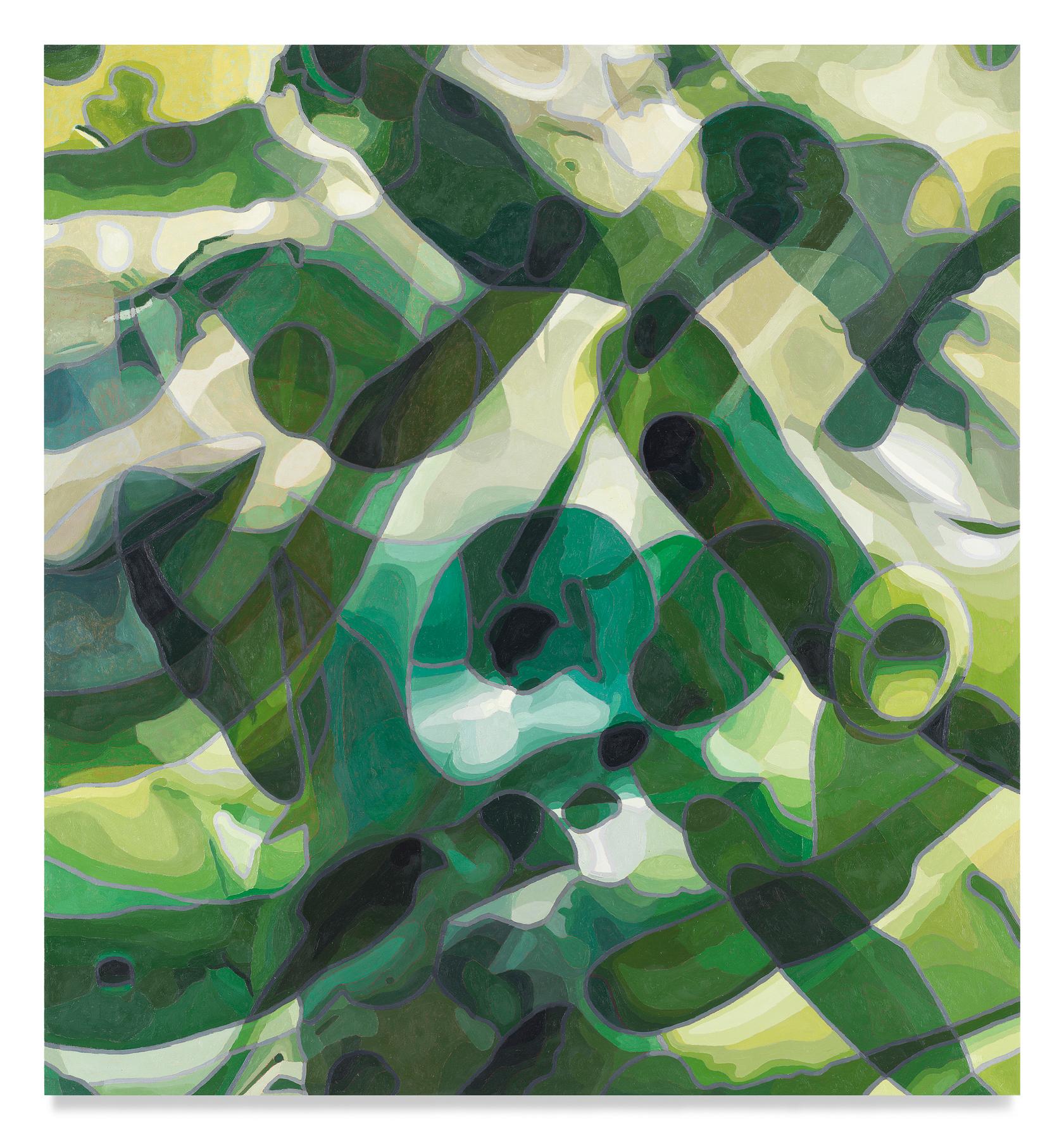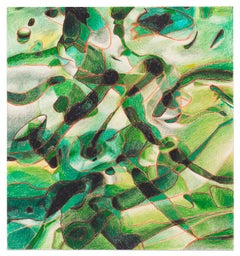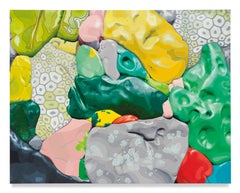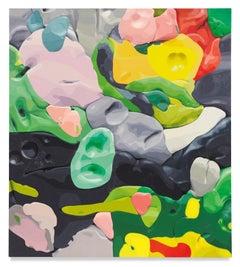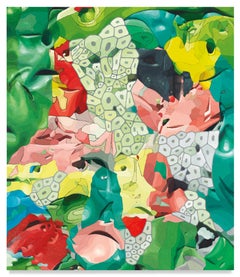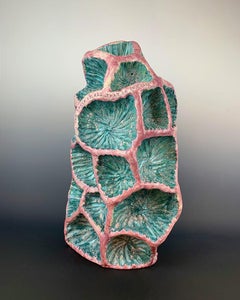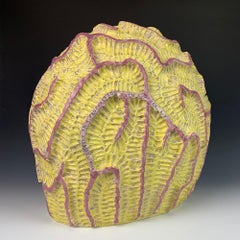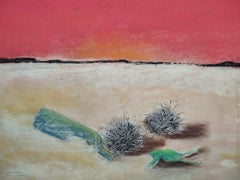Want more images or videos?
Request additional images or videos from the seller
1 of 2
Alexander RossColor Clay Forms2022
2022
Price Upon Request
Price Upon Request
Price Upon Request
Price Upon Request
Price Upon Request
Price Upon Request
Price Upon Request
Price Upon Request
Price Upon Request
Price Upon Request
About the Item
Alexander Ross
Color Clay Forms, 2022
Color pencil, graphite
6 5/8 x 10 7/8 inches
16.8 x 27.6 cm
Signed, dated (verso)
--
Best known for his mysterious biomorphic paintings, Alexander Ross’ paintings suggest surreal landscapes, molecular ecosystems, topographical maps, and extraterrestrial lifeforms. His characteristic and masterful handling of paint is nearly photorealistic, with incremental bands of shading that develop into dimensional shapes, blurring the line between sculpture and painting. Ross’ palette largely consists of multiple shades of green with flashes of red, yellow, blue and pink that emerge within the abstract forms.
Philomena Epps writes, “He sportively encourages us to undergo an experience of spectatorial confusion; the closer and longer you might focus on an image, the less you might understand it. Like the rotations of a kaleidoscope, the patterns continually mutate, seducing us with their boundless perplexity.”
Alexander Ross (b. 1960 in Denver, CO) lives and works in Great Barrington, MA.
Recent solo exhibitions include Miles McEnery Gallery, New York, NY; Fiendish Plots, Lincoln, NE; LABspace, Hillsdale, NY; David Nolan Gallery, New York, NY; Galerie Hussenot, Paris, France; Nolan Judin, Berlin, Germany; New York Foundation for the Arts, New York, NY; among others.
Group exhibitions at numerous international institutions include the Elizabeth Foundation for the Arts, New York, NY; Institute of Contemporary Art,Valencia, Spain; Museo de Arte Moderno, Mexico City, Mexico; Nelson-Atkins Museum of Art, Kansas City, MO; the Whitney Museum of American Art, New York, NY, among others.
His work may be found in the collections of theThe British Museum, London, United Kingdom; Denver Art Museum, Denver, CO; Morgan Library & Museum, New York, NY; Museum of Modern Art, New York, NY; Nelson-Atkins Museum of Art, Saint Louis, MO; among others.
- Creator:Alexander Ross (1908 - 1990, American)
- Creation Year:2022
- Dimensions:Height: 6.625 in (16.83 cm)Width: 10.875 in (27.63 cm)
- Medium:
- Period:
- Framing:Framing Options Available
- Condition:
- Gallery Location:New York, NY
- Reference Number:Seller: 346381stDibs: LU2085210836912
About the Seller
No Reviews Yet
Recognized Seller
These prestigious sellers are industry leaders and represent the highest echelon for item quality and design.
Established in 1999
1stDibs seller since 2022
Typical response time: Several days
- ShippingRetrieving quote...Shipping from: New York, NY
- Return Policy
Authenticity Guarantee
In the unlikely event there’s an issue with an item’s authenticity, contact us within 1 year for a full refund. DetailsMoney-Back Guarantee
If your item is not as described, is damaged in transit, or does not arrive, contact us within 7 days for a full refund. Details24-Hour Cancellation
You have a 24-hour grace period in which to reconsider your purchase, with no questions asked.Vetted Professional Sellers
Our world-class sellers must adhere to strict standards for service and quality, maintaining the integrity of our listings.Price-Match Guarantee
If you find that a seller listed the same item for a lower price elsewhere, we’ll match it.Trusted Global Delivery
Our best-in-class carrier network provides specialized shipping options worldwide, including custom delivery.More From This Seller
View AllUntitled
By Alexander Ross
Located in New York, NY
Alexander Ross
Untitled, 2020
Color pencil, graphite
11 x 10 1/4 inches
27.9 x 26 cm
Signed and dated (verso)
--
Best known for his mysterious biomorphic paintings...
Category
2010s Drawings and Watercolor Paintings
Materials
Graphite
Price Upon Request
Untitled
By Alexander Ross
Located in New York, NY
Alexander Ross
Untitled, 2021
Oil on canvas
47 x 60 inches
119.4 x 152.4 cm
Signed and dated (verso)
--
Best known for his mysterious biomorphic paintings, Alexander Ross’ painting...
Category
2010s Paintings
Materials
Oil
Price Upon Request
Untitled
By Alexander Ross
Located in New York, NY
Alexander Ross
Untitled, 2022
Oil on canvas
57 x 51 inches
144.8 x 129.5 cm
Signed and dated (verso)
--
Best known for his mysterious biomorphic paintings...
Category
2010s Paintings
Materials
Oil
Price Upon Request
Untitled
By Alexander Ross
Located in New York, NY
Alexander Ross
Untitled, 2021
Oil on canvas
58 x 50 inches
147.3 x 127 cm
Signed and dated (verso)
--
Best known for his mysterious biomorphic paintings...
Category
2010s Paintings
Materials
Oil
Price Upon Request
Untitled
By Alexander Ross
Located in New York, NY
Alexander Ross
Untitled, 2022
Oil on canvas
46 x 40 inches
116.8 x 101.6 cm
Signed and dated (verso)
--
Best known for his mysterious biomorphic paintings...
Category
2010s Paintings
Materials
Oil
Price Upon Request
Untitled
By Alexander Ross
Located in New York, NY
Alexander Ross
Untitled, 2020
Oil on canvas
58 x 54 inches
147.3 x 137.2 cm
Signed and dated (verso)
--
Best known for his mysterious biomorphic paintings...
Category
2010s Paintings
Materials
Oil
Price Upon Request
You May Also Like
Untitled
By Alexander Ross
Located in Saint Louis, MO
Alexander Ross
Untitled, 2007
Watercolor, colored pencil, gouache and graphite on paper
Framed Dimensions: 28 x 25.5 inches (71.1 x 64.8 cm)
Image Dimensions: 23 x 22 inches (58.4 ...
Category
Early 2000s Contemporary Still-life Drawings and Watercolors
Materials
Watercolor, Gouache, Archival Paper, Color Pencil, Graphite
Price Upon Request
The World
By Robert Milnes
Located in Denton, TX
Earthenware with colored slips. Epoxy. Cone 04 textured and satin glazes.
Signed, titled, and dated in ink on bottom.
Milnes served as Dean of the College of Visuals Arts and Design at the University of North Texas from January 2006 to his retirement in August 2014, when he moved to Asheville, NC with his wife Karen, re-establishing Arbitrary Forms Studio there. A sculptor and ceramist, he served previously as Director of the School of Art and Design at San Jose State University in California, Director of the School of Art at Louisiana State University, and as Chair of the Art Department at Edinboro University of Pennsylvania. He taught at the Penland School of Crafts in 1972 and 1979.
Milnes is the past president of the National Council of Art Administrators and the National Association of Schools of Art and Design. He has served as a consultant or evaluator for more than sixty universities, colleges, and independent schools of art in the US and abroad and served in Dallas on the Board of Directors of the Business Council for the Arts and as Chair of the Community Advisory Board for KERA, the NPR station for North Texas. He was recently named a Fellow and Lifetime Member of NASAD and served on the Board of Directors of the Center for Craft in Asheville, NC and as co-chair of the Blue Ridge Public Radio Strategic Planning Committee.
He is a member of the Southern Highland Crafts Guild.
Category
2010s Abstract Abstract Sculptures
Materials
Earthenware, Slip, Glaze
Logical Picture
By Robert Milnes
Located in Denton, TX
Earthenware with colored slips. Epoxy, acrylic paint. Cone 04 textured and satin glazes.
Signed, titled, and dated in ink on bottom by Robert Milnes
Milnes served as Dean of the Col...
Category
2010s Abstract Abstract Sculptures
Materials
Earthenware, Slip, Glaze
Untitled
Located in Barcelona, BARCELONA
the painting is being offered with a work and authenticity certificate
Category
1980s Drawings and Watercolor Paintings
Materials
Mixed Media
Monument
By Henry Hablak
Located in Philadelphia, PA
"Monument" is an original gouache, ink, colored pencil, and wood artwork by Henry Hablak measuring approx. 8"h x 5.5"w x .75".
Henry Hablak is a tattoo artist and illustrator based ...
Category
2010s Contemporary Still-life Sculptures
Materials
Ink, Wood, Gouache, Color Pencil
Study for Sculpture
By David Hayes
Located in Fort Lauderdale, FL
David Hayes (1931 - 2013)
Study for Sculpture, 2002
Gouache on Paper
22 x 30 in
Category
Early 2000s Contemporary Paintings
Materials
Gouache
Price Upon Request
More Ways To Browse
Denver Co
Miles Mcenery Gallery
Watercolour Painting
Vintage Art Drawings
Watercolor Paintings In Landscapes In Watercolor
Figurative Watercolour
Antique Watercolours
Original Watercolors
Abstract Watercolour Art
Abstract Watercolour Paintings
Antique Watercolor Painting
Antique Watercolor Paintings
Antique Watercolour Paintings Paintings
Watercolor Brown
Midcentury Watercolors
Original Watercolor Painting
Art Brown Drawings
Drawings Vintage Frame
